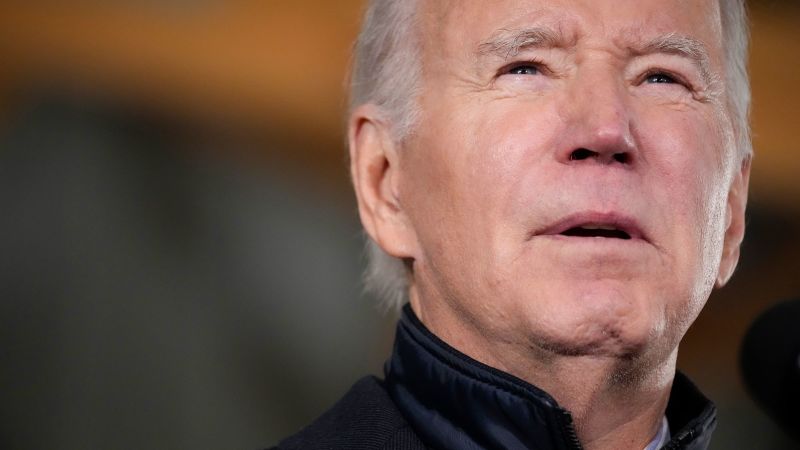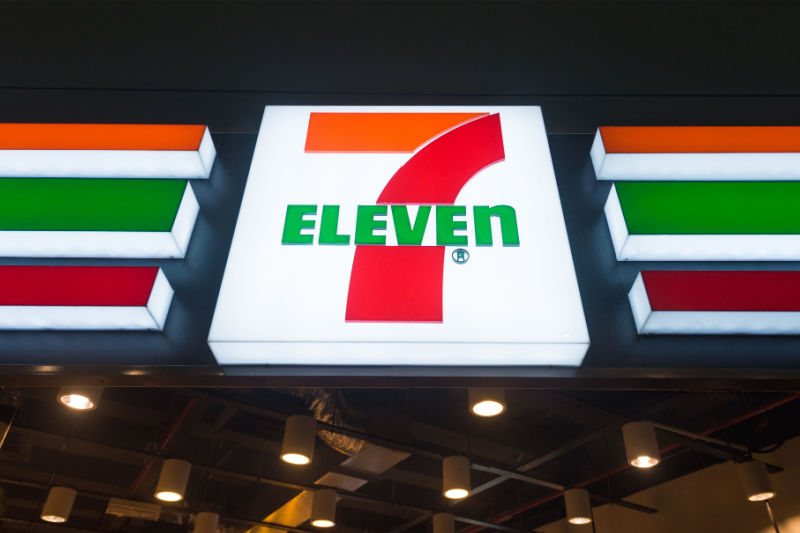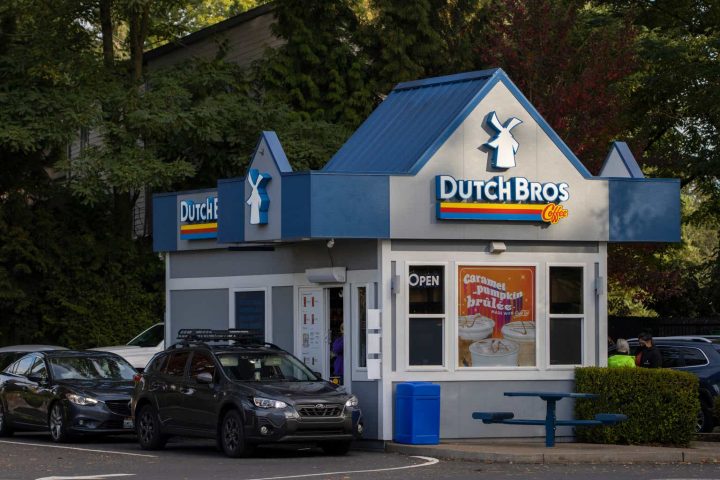SPX Technologies, Inc. (NYSE:SPXC) Q3 2023 Earnings Conference Call November 2, 2023 4:45 PM ET
Company Participants
Paul Clegg – Vice President of Investor Relations & Communications
Eugene Lowe – President, Chief Executive Officer & Director
Mark Carano – Vice President, Chief Financial Officer & Treasurer
Conference Call Participants
Bryan Blair – Oppenheimer
Lawrence De Maria – William Blair & Company
Stephen Ferazani – Sidoti & Company
Walter Liptak – Seaport Research Partners
Damian Karas – UBS
Operator
Good day and thank you for standing by. Welcome to the Q3 2023 SPX Technologies Earnings Conference Call. [Operator Instructions] Please be advised that today’s conference is being recorded.
I would now like to hand the conference over to your speaker today, Paul Clegg, VP of Investor Relations and Communications. Please go ahead.
Paul Clegg
Thank you and good afternoon, everyone. Thanks for joining us. With me on the call today are Gene Lowe, our President and Chief Executive Officer; and Mark Carano, our Chief Financial Officer.
A press release containing our third quarter 2023 results was issued today after market close. You can find the release and our earnings slide presentation, as well as a link to a live webcast of this call, in the Investor Relations section of our website at spx.com. I encourage you to review our disclosure and discussion of GAAP results in the press release and to follow along with the slide presentation during our prepared remarks. A replay of this webcast will be available on our website until November 9. As a reminder, portions of our presentation and comments are forward-looking and subject to Safe Harbor provisions. Please also note the risk factors in our most recent SEC filings. Our comments today will largely focus on adjusted financial results and comparisons will be the results of continuing operations only. You can find detailed reconciliations of historical adjusted figures from their respective GAAP measures in the appendix to today’s presentation. Our adjusted earnings per share exclude primarily acquisition-related costs, non-service pension items, mark-to-market changes and amortization expense.
Finally, we will be conducting meetings with investors over the coming months, including at the Baird Industrials Conference in Chicago and at the UBS Industrial Summit in Palm Beach, Florida, both in November.
And with that, I’ll turn the call over to Gene.
Eugene Lowe
Thanks, Paul. Good afternoon, everyone and thank you for joining us. On the call today we’ll provide you with an update on our consolidated and segment results for the third quarter. We’ll also provide an update on our full year guidance for 2023.
We achieved strong results in Q3, including significant year-on-year revenue and margin growth and solid performances from our recent acquisitions. During Q3, our businesses executed well and we saw strong demand continue across many of our end markets. Considering our strong year-to-date performance and outlook, we are raising our full year guidance for adjusted EPS by $0.05 at the midpoint, reflecting year-over-year growth of approximately 38%.
During the quarter, we finalized an agreement with Mitsubishi to settle all remaining claims between us related to the projects in South Africa. This is a very positive development which, after many years, brings an end to our involvement in these projects and allows us to further focus on growth. Mark will discuss this in more detail. Overall, I’m pleased with our third quarter performance and continued strong execution on our value creation roadmap.
Turning to our high-level results. For the quarter, we grew revenue by approximately 21%, including organic growth of 10.5%, driven by strength in both our HVAC and Detection & Measurement segments. Adjusted operating income grew approximately 57% year-on-year with 390 basis points of margin expansion. With strong backlog, solid order trends and positive operational momentum, we are well-positioned to achieve our updated full year guidance.
As always, I’d like to update you on our value creation efforts. During Q3, we had several successes, including in our digital and sustainability initiatives. On the digital front, we continued to drive value for our customers for the rollout of new software platforms that offer an enhanced functionality. In our fare collection business, we are getting significant customer interest in the newly launched 2.0 version of our Genfare Link platform. This new cloud-based solution enables more efficient use of public transit assets by providing faster and easier data collection and enhanced reporting features.
In our locators business, we recently launched Radio detection Manager Online, a cloud-based solution that provides value-added insights such as scan quality and geospatial data. These help to improve the performance of technicians in the field and further reduce incidents of damage to underground assets.
On the sustainability front, our most recent company report reflects significant progress towards our carbon reduction target and notable improvements in water usage. These results validate the process improvements and investments we’ve been making to help drive efficient resource utilization and reduce costs. The report is available on our website.
And now, I’ll turn the call over to Mark to review our financial results and guidance.
Mark Carano
Thanks, Gene. It was another strong quarter for SPX Technologies. In Q3, our adjusted EPS grew 31% year-on-year to $1.06. The adjustments from GAAP results covered earlier by Paul are consistent with our historical practice.
Total company revenues increased 21.1% year-on-year. HVAC and Detection & Measurement contributed about evenly to organic growth of 10.5%. Acquisitions contributed 10% growth and FX was a modest tailwind. Segment income grew by $28.2 million, or 44.5% to $91.6 million, while segment margin increased 330 basis points. For the quarter in our HVAC segment, revenues grew 27% year-on-year. On an organic basis, revenues grew 10.6%, driven by cooling. Acquisitions contributed growth of 16.3% and included TAMCO in our cooling platform and ASPEQ in our heating platform. Segment income grew by $25.2 million, or 76%, while segment margin increased 570 basis points.
Segment income and margin continued to benefit from strong demand and operational performance in our cooling platform. Our recent acquisitions were accretive to segment margin. Despite strong Q3 deliveries, backlog was virtually unchanged from Q2 at $338 million, reflecting strong orders. For the quarter in Detection & Measurement, revenues grew 11.8% year-on-year. Each of our platforms contributed to organic growth of 10.4%, while currency had a favorable impact of 1.4%.
Our project businesses show particular strength, including some earlier-than-anticipated deliveries. Segment income increased by $3 million or 9.9% and margin was similar to the prior year. Segment backlog at quarter-end was $234 million, or flat with Q2 despite strong deliveries. Overall, we continue to experience a solid environment for project orders.
Turning now to our financial position at the end of the quarter. We ended Q3 with cash of $102 million and total debt of $674 million. Our leverage ratio declined to 1.7x from 1.8x in Q2. Year-to-date, adjusted free cash flow was approximately $112 million and we continue to expect full year adjusted free cash flow to be similar to our adjusted net income.
During Q3, we finalized an agreement with Mitsubishi to settle all the remaining claims between us related to the legacy South African projects. After many years of successfully reducing the risks associated with these complex projects, this agreement ends our involvement in South Africa and finalizes our repositioning away from legacy power-related businesses as we reprioritize resources to strengthen our focus on the growth of our HVAC and D&M segments.
For the full year 2023, we now expect net cash usage related to South Africa dispute payments of approximately $12 million. This includes a settlement payment in Q3 associated with the agreement, cash awards received during the quarter and a tax benefit. After the settlement payment in the third quarter, we remain in a net positive cash position relative to Mitsubishi on the cumulative awards that were granted by various legal dispute bodies. In 2024, we anticipate one final settlement payment of approximately $19 million, including the related tax benefit.
We are very pleased to put this chapter behind us. This agreement removes residual uncertainty related to the dispute resolution process and reflects favorable economics, including the elimination of future legal spending of $15 million to $20 million annually, roughly in line with the remaining settlement payment. Importantly, we see no impact on our capital deployment capacity and continue to anticipate a net leverage ratio at year-end of 1.5x or lower.
Moving on to our guidance. We are increasing our 2023 guidance for adjusted EPS to a range of $4.22 to $4.32 from a prior range of $4.15 to $4.30. The new midpoint of $4.27 reflects a year-on-year growth of 38%. Our HVAC segment guidance remains unchanged. We continue to anticipate segment revenue growth of approximately 24% at the midpoint and segment income margin of approximately 20%.
In our Detection & Measurement segment, we now anticipate revenue in a range of $610 million to $620 million, or a year-on-year increase of approximately 12.5% at the midpoint. This compares with the prior range of $590 million to $605 million. We continue to anticipate segment income margin of approximately 20%. The increase in D&M guidance results largely from stronger project deliveries in the third quarter. As always, you will find modeling considerations in the appendix to our presentation.
I’ll now turn the call back over to Gene for a review of our end markets and his closing comments.
Eugene Lowe
Thanks, Mark. Current market conditions remain supportive of our outlook. Within our HVAC segment, we continue to see strong demand for cooling products across a broad set of end market applications, including data centers, semiconductor plants and various other industrial facilities. In heating, commercial and industrial, demand remained solid and channels remain balanced. As anticipated, heating backlog has continued to normalize from last year’s elevated levels. As a result, weather is once again a key factor in influencing the level of demand during the winter months. In Detection & Measurement, our run rate demand is steady with some regional variation, while the environment for project orders remain solid.
In summary, I’m very pleased with our third quarter and year-to-date performance. With a strong backlog and positive operational momentum, we are well-positioned to achieve our updated full year guidance. Looking ahead, I see multiple opportunities to continue investing for growth, including through our active M&A pipeline. I’m also pleased that our settlement agreement in South Africa brings to an end our long involvement there with a favorable economic outcome and the elimination of this risk. I remain very confident in our ability to continue executing on our value creation framework in the near-term for years to come.
And with that, I’ll turn the call back to Paul.
Paul Clegg
Thanks, Gene. Operator, we are now ready to go to questions.
Question-and-Answer Session
Operator
[Operator Instructions] And our first question comes from the line of Bryan Blair with Oppenheimer.
Bryan Blair
I was hoping you could provide a little more color on the order rates in early Q4 and if there’s any divergence from the underlying trends that were obviously favorable through Q3. And then, it would be great to hear how you’re thinking about demand visibility and growth opportunities into ’24 across SPX [ph].
Eugene Lowe
Yes, Bryan, I’ll take a crack at that. I think, overall, we feel very good about what we’re seeing. If I break it down across our different segments, what I would say is cooling remains very strong. There’s a couple of drivers there. But even across the board, we’re seeing nice strength in our overall cooling business which is really our largest platform. So I think we’re very well-positioned as we look forward into 2024 there. Shifting over to our heating business, our heating business has largely normalized. A lot of that is replacement demand and I think we’re in a more normal situation. So on the Hydronics side, the boiler side, you’re going to see steady growth there every year and the weather of any particular winter can drive demand up or suppress it a little bit.
And then electric heat, we’re seeing solid demand there across the board. So we feel good about what we’re seeing across our HVAC businesses today and actually feel good looking ahead to 2024. If I look on the Detection and Management side, what I would say is we typically think about the projects and the run rate businesses. We’ve had a very strong year on projects. Both over the past 2 years, we’ve done a nice job booking and revenuing a lot of orders but we feel very good on the projects going into 2024. So there’s been a lot of awards and we think we’re very well set up on that side of the equation.
And then really, you get to run rate businesses and run rate remains steady. So I think that our markets are holding up. Obviously, we’ve got to keep an eye on the economy and what’s going on there. But from what we see today, we feel very good about the balance of the year and we feel like it’s still early. We’re still pulling together our planning for ’24 but I would say we’re moving in a positive direction there.
Mark, I don’t know if there’s anything else you’d like to add?
Mark Carano
Yes. Thanks, Gene. I would say, Bryan, when I look at the tailwinds and some of the broader drivers across the business that we’ve talked about over the last handful of quarters, I mean they remain solid and positive in many cases. And I think whether it’s some of this federal spending, government spending from the infrastructure bill that’s driving both opportunities in D&M or on the HVAC side, whether it’s reshoring or just general sort of industrial activity, all those trends remain positive today. So we feel good about the backdrop and I don’t think it’s really changed as we sit today.
Eugene Lowe
Yes. And interestingly enough, if you look ahead to ’24, even though we’re really accelerating our shipments this year and having a very good revenue year, we believe we’re going to be nicely up on backlog as we go into ’24. So I think we’re going to be starting in a strong position. So yes, from what we see today in our end markets, we’re feeling positive.
Bryan Blair
Would you be willing to put some numbers to how much data centers and semiconductor plants factor into your confidence on the HVAC side? And what kind of growth has the HVAC segment seen in those verticals in 2023? And what should we expect in ’24?
Eugene Lowe
Yes. I can make a few comments there. We’ve always been in data centers.
Mark Carano
Yes, probably about 10% of this year’s cooling revenue we anticipate would come from data centers. For example, Bryan, that’s up pretty nicely from the prior year. And as you probably have heard us say also, we are seeing an increasing amount of exposure for semiconductor manufacturing and battery plants. And all 3 of those, if you look at those, the customer base there has pretty good visibility into their forward years. So we feel very good about the opportunity there.
Eugene Lowe
Yes. And then the other thing I would say is, even if you strip out those end markets, we’re seeing nice growth across our other end markets. So you take hospitality, institutional, education. Those are nice growth drivers, no doubt and we do feel like there’s some nice forward demand there and that that TAM, that market has expanded. But even in our other segments, we’re seeing nice success there as well. So yes, we feel good about that pride as we look into ’24 and ’25.
Bryan Blair
And last one. Any additional detail you can offer, update on TAMCO and ASPEQ, that would be great. How is integration tracking? How is financial contribution relative to the year 1 deal plans in both cases? And any update on the partial year 2023 accretion? And how should we think about carryover into 2024?
Eugene Lowe
Yes, I’ll start. I think, overall, we’re feeling very good. I’m feeling very good about both of them. The TAMCO one is a little bit more straightforward in the sense that that’s bolting into our EAM business. Those guys have really done a nice job. We’re actually seeing some nice cross-selling there. We’re seeing some data center wins there. So on the TAMCO side, that machine is feeling very good. I really feel like we’ve made a lot of progress there. As we’ve talked about all along, on the ASPEQ side, it is a little bit more complex because you’re bringing 2 scale businesses together. ASPEQ is performing very well. They are, I believe, both of them are ahead of their profit plans and the models that we built for the business but it is a little bit more of a complicated integration there.
We are tracking very well there. We have a very seasoned leader there, Randy Data, who’s overseeing all of the integration processes there. We actually feel really good about the direction of those businesses coming together. But that will take a little bit more time to really fully integrate those; So the upside is very good.
Anything else you guys like to add?
Mark Carano
Yes, I would just say that they’re on plan from a financial perspective, Bryan, as we had originally outlined when we made the acquisition. So we feel really good about their financial performance. I believe we indicated earlier this year there’d be about $0.20 of accretion related to those two businesses, net of, obviously, the funding cost and we still hold true to that and believe that will be the case.
Operator
And your next question comes from the line of Lawrence De Maria with William Blair.
Lawrence De Maria
So obviously, the big question that people focused on is you just beat by $0.09. You only raised by about $0.05. So question is, is there some conservativism built into the fourth quarter? Or are you seeing any signs to be wary of? And how come, obviously, maybe we pulled forward some demand. So can you just talk to that aspect of the guidance, please?
Paul Clegg
Yes. Larry, this is Paul. We are raising by $0.05. In terms of whether we — for a lot of these models out there, we beat by about $0.06 for the quarter. About half of the improvement that we saw relative to what we were expecting was due to some pull-forward from the fourth quarter and that was in the Detection & Measurement segment on a project basis and that was about $0.03, actually, of that. We also did get a tax impact this quarter that was a bit higher than what we were originally anticipating and that had to do with the repatriation of some cash. And the impact there was about $0.04.
Mark Carano
I would say just from a guidance perspective, I mean, I think we view it as sort of balanced given the market conditions that we’re seeing out there today.
Lawrence De Maria
Then obviously, as much as we care about 4Q, we’re also looking towards 2024. And you guys have been doing exceptionally well. Are there any pockets of weakness? We talked about some of the strength you’re seeing. Any actual tangible signs of weakness, concerns out there other than the macro tea leaves? So just kind of what are you seeing that’s concerning specifically out there, if anything?
Mark Carano
Larry, we’re not really seeing anything as we sit today, that’s sort of tangible weakness, right? We are monitoring kind of the broader economic environment which, depending on your perspective, could be positive to mixed in the markets you’re in. But overall, we’re not seeing anywhere. We continue to monitor our run rate businesses and we watch those very closely. We’ve kind of characterized them as steady and largely on target. So it’s kind of what we see as we sit today.
Lawrence De Maria
You talked about having a higher backlog, I think, exiting the year and some of the strength you’re seen out there and trends and things. So if we’re going to assume we’re talking about incremental margins next year, can you just talk in terms of our modeling? How should we think about either incremental margins or versus just overall margin improvement next year based on continuous improvement, just some perspective on how we should be thinking about that?
Paul Clegg
Yes, Larry, Gene mentioned several tailwinds that we think are blowing favorably for us in the HVAC space around cooling. So we think we’re in a very good position there. You’ve heard us talk about some of the continuous improvement processes that we have in place and some of the investments that we’re making this year to improve our overall throughput and even expand capacity somewhat for the cooling business.
I think we feel very good there about our margin opportunities. We did mention previously that there was probably about 100 basis points of price/cost benefit in our HVAC segment overall that at some point, if we were to see some progression in the price/cost equation, we could get some of that back. But I think overall, Larry, we feel good about our opportunities in HVAC to continue pushing the margin profile. In Detection & Measurement, as you know, we had about 100 basis points headwind this year associated with some mix in our communication technologies business. and a supply chain issue that we had in the third quarter which has been resolved at this point. We’re expecting those to go away next year.
So as we set the stage, set the table for next year with project orders which we think look pretty good for us, I think we feel good about our opportunities there also.
Operator
And your next question comes from the line of Stephen Ferazani with Sidoti.
Stephen Ferazani
I want to follow up on some of the other questions. Obviously, with a quarter left, we can sort of back into how you’re guiding for 4Q. You addressed it a little bit, right, because I can back into D&M for fourth quarter and that looks flat to down and another quarter where margins are down year-over-year. And I think you just said some of the pressures on margins are through this quarter. I’m just trying to get a better sense of your expectations of the D&M, particularly when we’re looking at another quarter of down margins and flattish to down revenue, how you pick that up next year. And was that just simply projects hit in 3Q versus hitting in 4Q of the year ago?
Mark Carano
Yes. So if you are looking at the year ago period, you’re absolutely right, that that was our highest quarter in D&M in the prior year. I think our margins in that quarter were almost 24% which is on the higher end of what we’ve been doing in that segment. And it was due to a concentration of some more favorable mix products in the prior year. This year, we did call out that we did have, again, that 100 kind of basis points impact from a couple of different items. One was, again, the mix in Comtech and a supply chain issue that’s been resolved. We would still expect to see fourth quarter as our highest margin quarter in Detection & Measurement this year. And we would expect to benefit from the absence of those same issues in the subsequent year.
Stephen Ferazani
When we think about moving forward with infrastructure funding which has clearly been funneling at least through the summer, as well as inflation Reduction Act and some other federal funding that could directly impact you, are you seeing it now? And can you see a bigger impact from some of those funding opportunities next year?
Mark Carano
Steve, we have seen some benefit from some of that government funding, particularly in our transportation business. Some of those projects have already have benefited from availability of that funding. And we anticipate that, next year, we will begin to see additional dollars benefit many of the businesses across the platform. We’ve talked about where that could benefit AtoN as well as our Location and Inspection businesses. And then, clearly, you may see some benefit from some of the HVAC businesses as well. So we’re watching that carefully. We anticipate that we’ll see more of those dollars flow out. I think most people believe that the distribution of those funds has been slower than I think anyone anticipated. But we believe we’ll benefit from those next year and beyond, quite frankly, for the next few years.
Stephen Ferazani
Already starting to delever out of the ASPEQ deal, clearly continues to be a strong cash flow generator. Any targets on where you’re expecting or targeting net leverage to go near-term versus longer-term?
Mark Carano
Yes. I think, Steve, I mean, we’ve communicated that we’re most comfortable on kind of a net leverage range between 1.5x and 2.5x and I don’t think anything has changed with respect to that today. Obviously, leverage will be dependent on acquisition activity. But as we look into next year, we’ll see what sort of opportunities present themselves and whether there’s anything that makes sense from an M&A perspective.
Stephen Ferazani
Any reason to think you’d lean towards smaller after making the larger ASPEQ deal?
Mark Carano
No, not necessarily. I think we’ll kind of consider any and all opportunities that are out there, right? Small ones, obviously, can be nicely accretive but some of these more mid-sized transactions that we completed this year fit nicely as well. I think it will be a function of what opportunities are there and is there a strategic rationale for them along with a value creation path. I think that that’s more important, obviously, than size.
Operator
And your next question comes from the line of Walter Liptak from Seaport Research.
Walter Liptak
I wanted to ask about the D&M segment. It did a little bit better than I was expecting and it was up quarter-over-quarter. And you mentioned in Larry’s question that there was some pull-forward of projects. I wonder if you can give us a little bit more on that.
Paul Clegg
Yes. So we [indiscernible] at about $0.03 of impact for the third quarter coming from the fourth quarter and that was largely related to our fare collection business but we also did a little bit better in our AtoN business than anticipated.
Walter Liptak
And then maybe the same thing on orders. The backlog looked pretty strong to me and it looks like the orders might be up sequentially and year-over-year. I wonder if you can talk about what’s going well in the different businesses within D&M for orders?
Paul Clegg
So yes, our backlog overall for the — at the end of the quarter, Walt was around $234 million and that’s about flat sequentially. As you know, in our D&M business, our backlog tends to flex up and down a little bit as you bring in the large projects in terms of orders and then deliver them. So the variances maybe are a little less meaningful than the absolute size of that. But I think what I would say is the project businesses which make up the vast majority of D&M backlog, are very high relative to historical levels. And Comtech and our fare collection business are really the largest contributors to that but we also have seen some nice backlog in our [indiscernible] business.
Walter Liptak
And I guess thinking about those larger projects, are those going to ship in fourth quarter? Or are these the kind of projects that are going to be shipping in, say, 2024 or the first half, or whatever?
Paul Clegg
Yes, it’s a good question. We do have some of that backlog that goes into next year, Walt. So we feel like we’re starting to be well set-up for 2024. There’s a little bit of it that would roll even into the subsequent year, into 2025.
Operator
[Operator Instructions] And your next question comes from the line of Damian Karas with UBS.
Damian Karas
Perhaps on the official end to Medupi and Kusile, I remember the days when we were talking about that literally quarter-in, quarter-out, if not more. Some pretty vivid memories of all that. Are you sure you don’t want to get involved in any mega-coal-power projects, Gene?
Eugene Lowe
Yes, I think that’s a pretty safe assumption and particularly augmented by the fact that we sold all of those businesses about 6 years ago. So it’s good to put that in the rear-view mirror.
Damian Karas
Most definitely. So I appreciate all the color on the demand environment. But I think, for the last question that was asked, so you’ve mentioned solid order trends. I don’t want to make any presumptions about the level. Could you just share any numbers around the actual order rates year-over-year in the quarter and how are those lining up?
Paul Clegg
I think maybe what I could give you is that our book-to-bill in really both segments is one or better. And going into the next quarter, into the fourth quarter, we’d expect it to be a little bit better than 1. And again, coming off fairly strong quarters in terms of deliveries.
Damian Karas
And then, I wanted to ask you about your distribution partners, right? A lot of manufacturing companies, certainly in the HVAC industry, they’ve been experiencing destocking challenges. It’s not something that you guys have really touched on. I recognize you have more build-to-order aspects to your HVAC business. But could you just remind us, kind of across SPX, where you do rely on kind of third-party distribution? And I’m curious to hear is you seeing any indications of distribution partners maybe carrying some excess inventory.
Eugene Lowe
Yes, Damian. What I would say is you’re exactly right. I think the bulk of our business is engineered to order, so it’s not really going into that distribution zone. I would say there are a couple of exceptions to that. Probably the biggest one would be our residential hydraulics, or residential boiler business. And that is where we actually have very good visibility into where the distributors are, what they’re carrying, not at every distributor but a good chunk of them and a good feel for the market. This is something we spend a lot of time on in making sure that we feel like we know whether the distribution is balanced, or high or low. And what we see today is it’s pretty balanced on that side, so we don’t really have any concerns there. Right now, on the boiler side, we’re keeping our eyes more on the weather. Now, typically a cold snap will drive a big chunk of extra orders and so forth there. But I think that’s the biggest place that we keep our eyes on.
The second one I would say which is smaller but would be radio detection. And I would say that we’ve seen perhaps a little bit of destocking there. That’s already in our numbers this year. Obviously, with interest rates going up, we are seeing that some distributors who really finance their inventory, it’s becoming a lot more expensive to finance inventory. And therefore, some of these smaller distributors, midsize distributors, they’re very careful about what they own. But those would be the two places I would say that we need to think about it. And I don’t know, anything else that I missed here with regards to [indiscernible]?
Mark Carano
I think you covered it.
Damian Karas
And then one last quick one. So speaking of Hydronics, so the DOE has proposed some rules recently on water heater efficiency. I’m curious if that proposal could move at all kind of into your business or any discussions out there that might be happening on the regulatory front for gas boilers.
Eugene Lowe
Yes. No, I think the DOE very, very systematically regulates hydronics. And typically, they do 5 years. We actually just finished upgrading all of our residential line to the appropriate app use [ph], the appropriate efficiency. And then after that was the commercial update which, again, is moving towards more high efficiencies. So yes and I think that’s a part of the never-ending part of what’s going on in our business. Typically, the standards are always getting higher. The efficiencies are getting higher. And we actually view that as something that typically benefits us. What you see is a lot of those new specifications are very hard to do and it takes a lot of engineering, a lot of rework. And so you have to have some scale to be able to build those new higher-efficiency solutions.
So I think this is true in Hydronics but I think this is true in almost all the markets that we serve. Because we’re typically leaders in the markets that we serve, when you see the standards being raised, we’re typically the company that’s most well-positioned to take advantage of that and then, typically, I would view as a net positive. So yes, those are still going on and we would anticipate those to continue going on. Typically with the EPA, it’s a 5-year cycle.
Operator
And I see no further questions at this time. I will now turn the call back over to Paul Clegg.
Paul Clegg
Thank you all for joining us and we look forward to catching up with you at upcoming conferences. Please reach out if you have questions.
Operator
This concludes today’s conference call. Thank you for your participation. You may now disconnect.
Read the full article here







